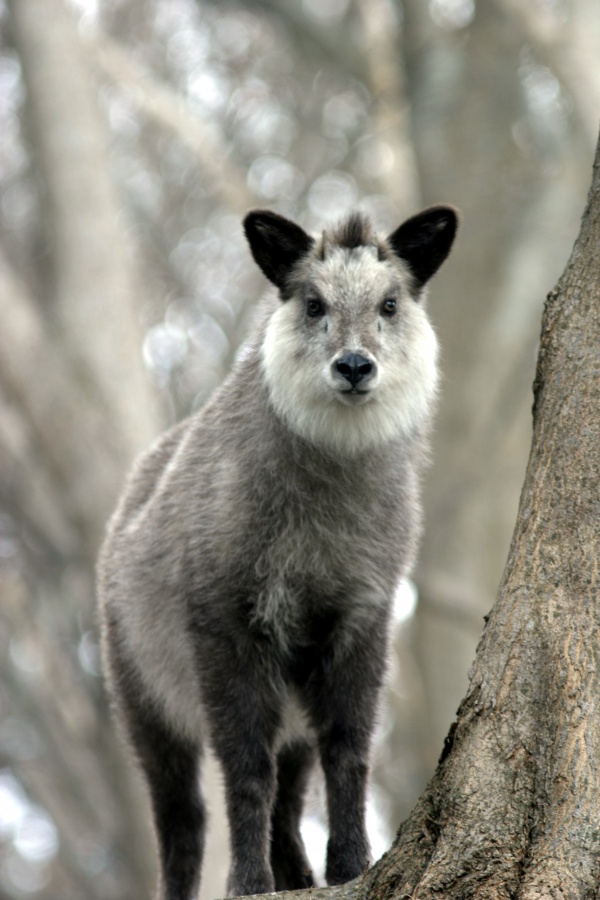Facts About Japanese serow
The Japanese serow is a captivating goat-antelope species native to Japan's dense woodlands, particularly in the northern and central regions of Honshu. More than just an intriguing element of Japan's wildlife, it is also a national symbol, protected within various conservation areas.
Adult Japanese serows stand approximately 81 centimeters tall and weigh between 30 to 45 kilograms. They are easily identifiable by their bushy fur and short horns. These diurnal creatures spend their days foraging, feeding on leaves, shoots, and acorns in the mountainous forests they inhabit.
Historically, the Japanese serow faced near extinction due to excessive hunting, which led to protective measures, including legislation designating the serow as a "Special National Monument." Thanks to these efforts, their populations have rebounded, and the IUCN Red List now classifies them as "Least Concern."
Taxonomically, the Japanese serow is a distinctive member of the Capricornis genus, closely related to the Taiwan serow. They possess a somewhat primitive appearance compared to other bovids, characterized by a stocky build, cloven hooves, and a woolly coat. Both males and females have short, backward-curving horns, making gender differentiation challenging.
Japanese serows are remarkably agile and sure-footed, well-suited to navigating rugged mountainous terrain. They primarily inhabit the temperate deciduous forests of northern and central Honshu. These territorial animals mark their ranges with gland secretions and have a varied diet consisting of various plant materials. Their four-chambered stomach aids in digesting this fibrous diet efficiently.
Reproductively, Japanese serows are socially monogamous. Females reach sexual maturity at around 30 months and breed once a year. Their courtship behaviors include licking, striking, and rubbing. Births usually occur between June and August, with mothers raising a single fawn for 1-2 years before it disperses.
Humans and Japanese serows share a long history. The animals were once hunted for various purposes, including medicinal use. However, successful conservation efforts have led to a population recovery, which has sometimes resulted in conflicts with agriculture and forestry due to their increasing numbers.
Culturally, the Japanese serow holds significant importance in Japan, often referred to as a "living national treasure of the forest." It symbolizes the country's unique biodiversity and appears in literature, art, and even commercial products like motorcycles. The serow's agility and speed have also made it a symbol of athleticism in Japan.
